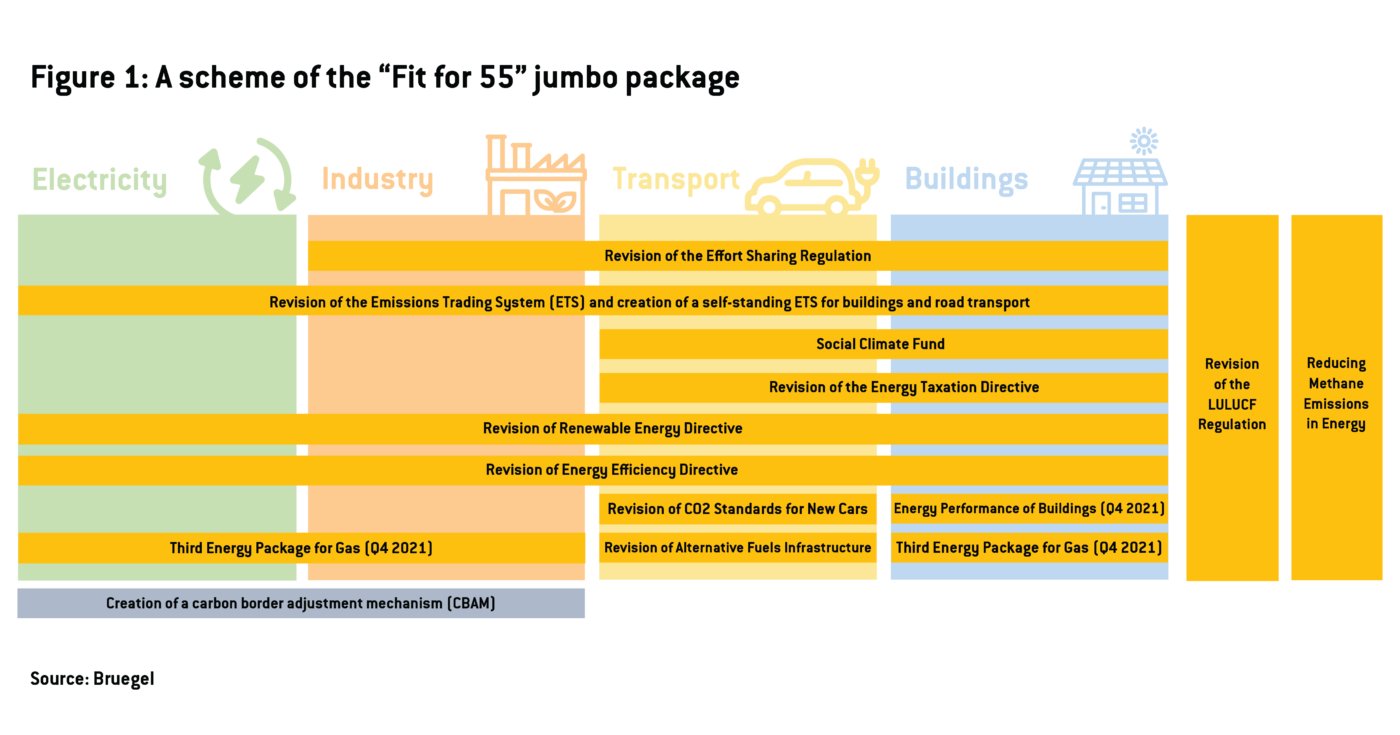
|
|
The European Commission’s long-awaited ‘Fit for 55’ package, intended to facilitate a European Union greenhouse gas emissions cut of 55% by 2030 compared to 1990, has as its core mission to turn the 2020s into a transformative decade for climate action. If agreed and implemented, the Fit for 55 proposals (Figure 1) would both deepen and broaden the decarbonisation of Europe’s economy to achieve climate neutrality by 2050. Without the package, under current EU climate legislation, Europe will only achieve a 60% emissions reduction by 2050.

Fit for 55: a transformative package
The broad package containing hundreds of pages of legislative proposals, includes the creation of a new EU emissions trading system (ETS) for buildings and road transport, a profound restructuring of energy taxation in Europe, increased renewable energy and energy efficiency targets, the introduction of a carbon border adjustment mechanism and revised CO2 emissions standards for new cars (see Annex).
Looking at the wide variety of 13 proposals, it is first interesting to note how certain items represent an evolution of current EU climate policymaking. It should be stressed that, while not innovative, this upgrade of existing instruments would deliver the majority of emission reductions by 2030 (Table 1). This is the case with the toughening of renewable energy and energy efficiency targets, and with the more rapid tightening of the ETS cap (ie the linear reduction factor – already made steeper when the EU jumped from the 2020 to the 2030 climate target).
Transport and buildings get the climate policy spotlight
The package also contains major new components, not least emissions trading for buildings and transport. There is a clear reason for action in this area: so far, EU climate policy has predominantly focused on the decarbonisation of the electricity and industrial sectors, notably through the ETS and binding targets for renewable energy and energy efficiency. Consequently, emissions from the electricity sector have fallen fast, and emissions from the industrial sector have also decreased, though to a lesser extent. However, emissions from the building sector have not decreased significantly, while transport sector emissions have even increased steadily (Figure 2)....
more at Bruegel